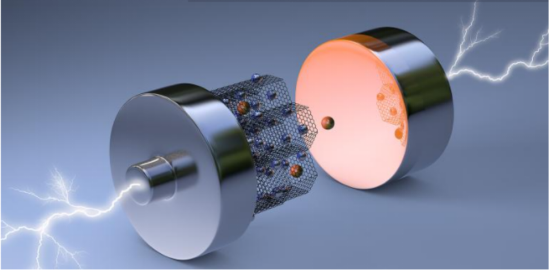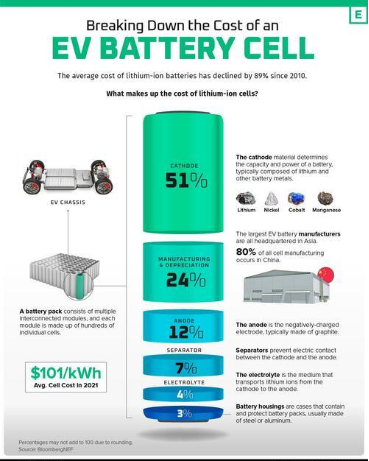
researchers at the university of texas at austin said that a thicker electrode, through the magnetically optimized ion route, can make charging faster and the power between charging is greater.
the researchers created an electrode with a 'fast channel' arrangement to improve charging speed and range.
researchers have found a unique way to avoid some common problems of lithium-ion batteries currently used by using magnets, so that electric vehicle (ev) batteries can be charged once to double the current range.
a team at the university of texas at austin has created a new electrode for lithium-ion batteries: the electrode is thicker because of the use of commercial magnets. the researchers said that the magnet is used to form an arrangement that is most conducive to the ion passing through the electrode.
the researchers said that the alignment generated during the manufacturing process is necessary to achieve performance gains, such as producing higher power and faster charging.
usually, thicker electrodes force ions to move longer distances, which results in slower charging times. the researchers said that one of the reasons was that the typical horizontal alignment of the electrode material layer forced the ion formation to move in a serpentine manner.
express lane
the researchers created a faster way for lithium ions in the electrode, which consists of thin two-dimensional (2d) materials that are stacked to form a thickness. they manipulate the direction of the material vertically through a magnetic field, creating a "fast path" for ions to pass through the electrode.
the person in charge of the project, professor guihua yu of walker department of mechanical engineering of university of texas austin and texas materials institute, said that two-dimensional materials are very suitable for manufacturing new electrodes for high-speed energy storage, because they only need a few nanometers of thickness to achieve fast charge transfer.
he said: "however, for high energy batteries based on thick electrode design, using the re stacked nano layer as a component can lead to a serious bottleneck in charge transmission, which is difficult to achieve high energy and fast charging."
zhengyu ju, a graduate student of yu research group, said in the news interview that the unique vertical structure of the electrode played a role, leading to the electrode "showing excellent electrochemical performance". high mechanical strength and high conductivity also help improve performance.
proof of concept
the researchers not only tested the commercial electrode, but also made a horizontally arranged electrode by using the same material for experimental control.
in the test, they found that compared with the existing commercial electrode battery, its vertically arranged electrodes may help electric vehicles reach twice the range of a single charge. in addition, they said that they could charge the vertical thick electrode to 50% of the energy level in 30 minutes, compared with the horizontal electrode which was charged for two and a half hours.
the researchers published their relevant papers in the journal proceedings of the national academy of sciences.
the researchers said that the project is still in its early stage, and there are still many places to explore and expand for the research on this type of electrode for improving the performance of electric vehicles.
they said the goal of the project was to expand the vertical tissue of the electrode layer and then apply it to different types of electrodes made of other materials. the researchers hope that the whole industry can adopt this method to produce faster charging and high-energy electric vehicle batteries.
source: china chemical and physical power industry association




